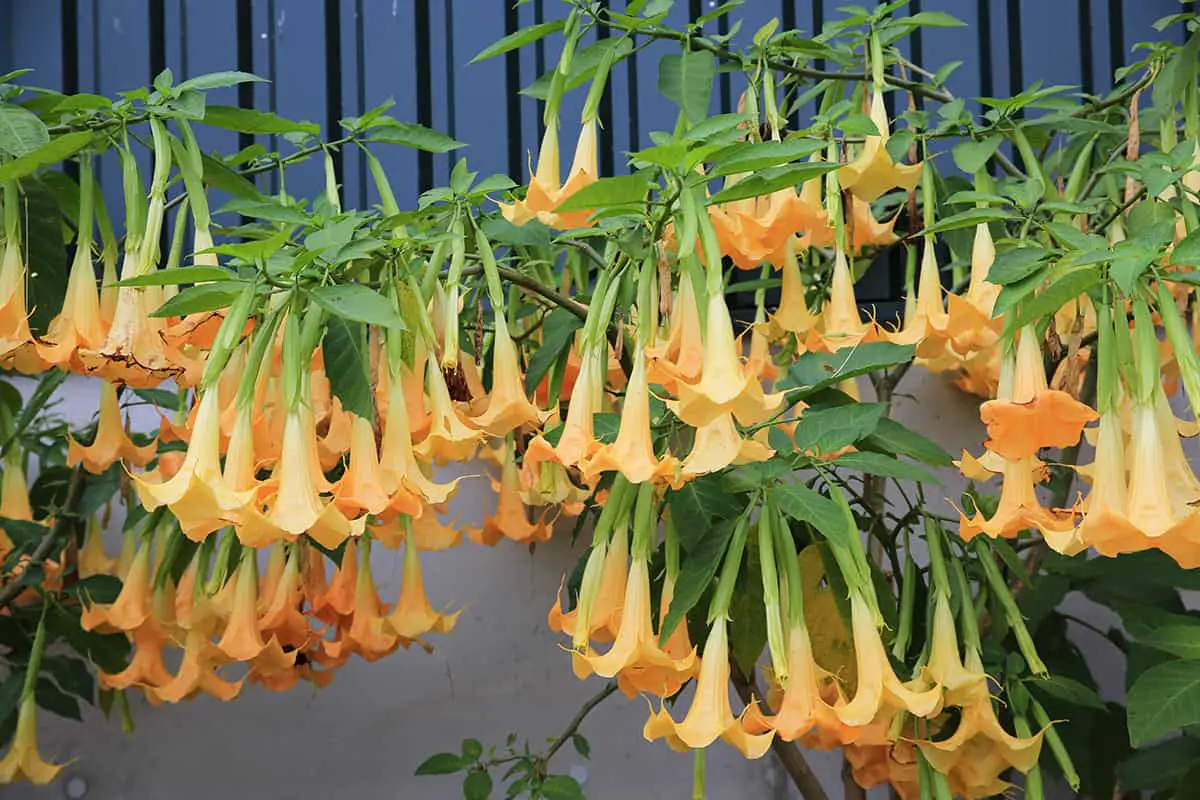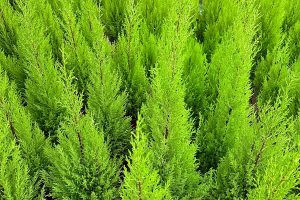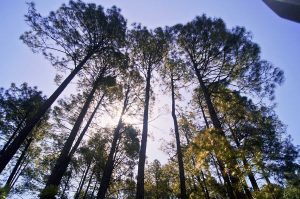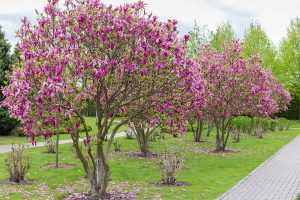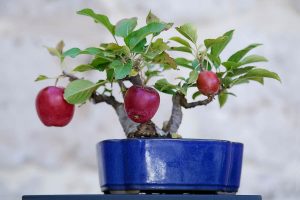Trees which produce orange flowers are relatively rare, but if you’re looking for a colorful specimen for your garden then consider these options. Orange is a warm color that will make a pleasing contrast against the cool green shade of foliage on most trees, helping your tree to make a strong statement when it is in bloom.
Trees with orange flowers include the Geiger Tree which is ideal for hot, coastal locations, and the Ozark Witch Hazel which is better suited to cooler climates and will thrive in a range of conditions. Here we look at some of the best orange flowering trees.
Table of Contents
Geiger Tree
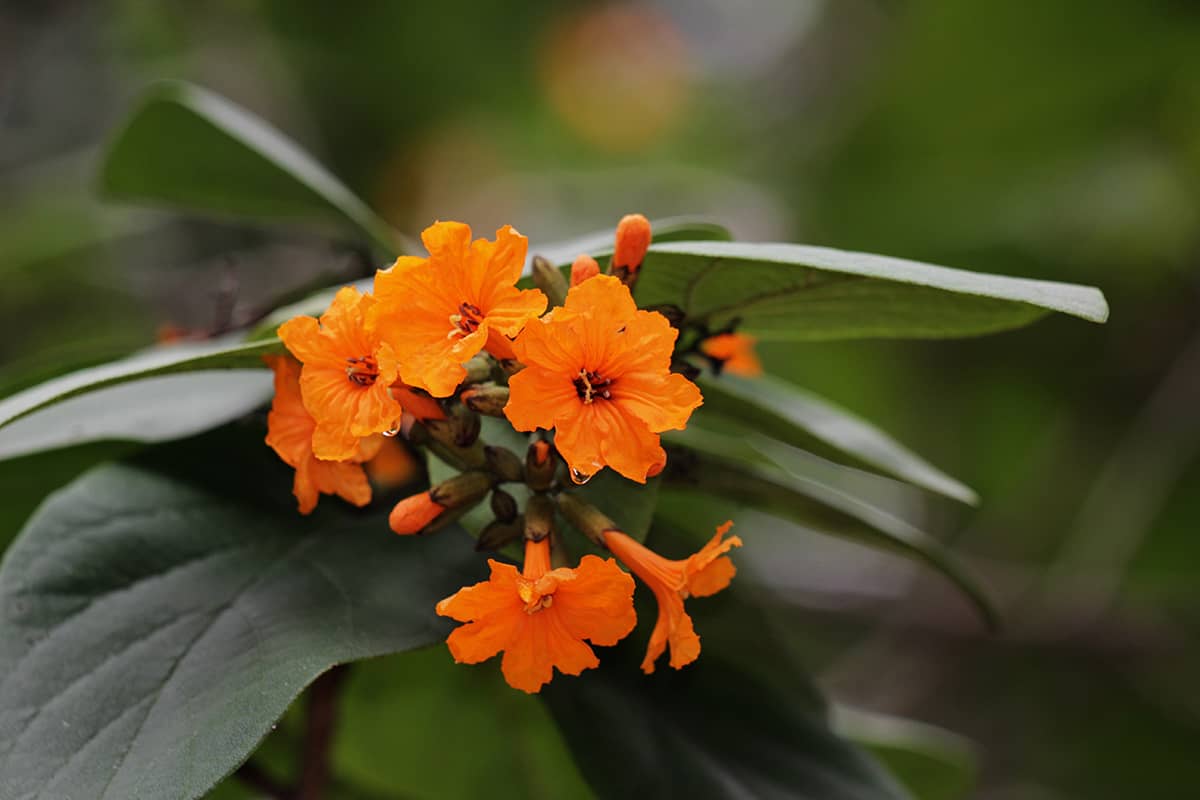
- Botanical name: Cordia sebestena
- Common names: Scarlet Cordia, Geiger Tree
- Plant family: Boraginaceae
- USDA hardiness zone: 10- 11
- Mature height: Up to 30 feet
- Mature spread: Up to 15 feet
The Geiger Tree is a small tree with a rounded canopy which produces striking orange flowers all year round, with a heavy blooming period in the summer. There is some controversy surrounding the origins of the Geiger Tree, with some believing it is native to the West Indies, and others insisting that it is a native plant of Florida in the United States.
The foliage of the tree is heart-shaped, with each leaf measuring between 4 and 6 inches in length. The mid to light green color of the foliage contrasts heavily against the vivid bright orange flowers. The blooms are funnel-shaped and very showy, measuring around 2 inches in length. They arrive in clusters on the tips of branches and develop into fruits that are white and egg-shaped, measuring between 1 and 2 inches in length.
This colorful tree is well suited to hot climates, especially in coastal regions since it is tolerant of saltwater and wind. It thrives in full sun or partial shade, in any type of well-draining soil.
Southern Silky Oak
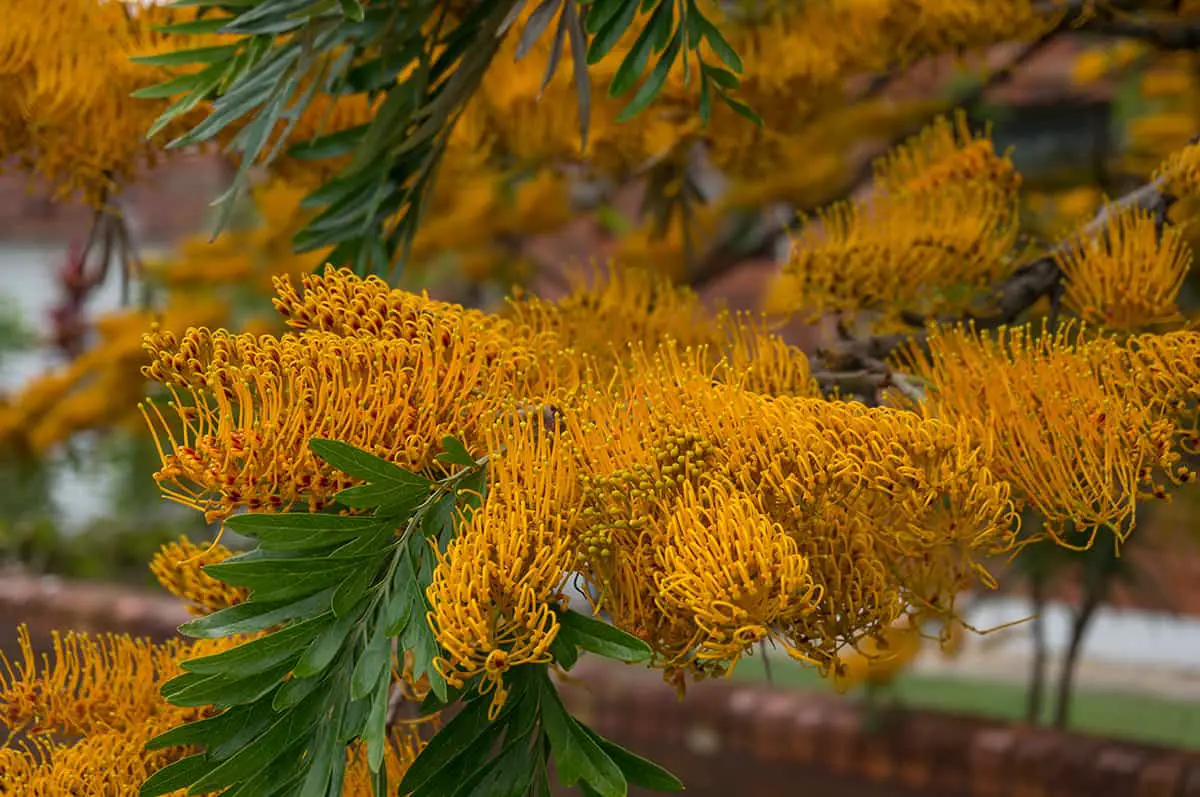
- Botanical name: Grevillea robusta
- Common names: Silk Oak, Silky Oak, Silver Oak, Silver Australian Oak
- Plant family: Proteaceae
- USDA hardiness zone: 10- 12
- Mature height: Up to 100 feet
- Mature spread: Up to 25 feet
This is a fast-growing and long-lived tree which is native to Australia, where it thrives in subtropical rainforest environments. Despite its common names, it is not related to the oak tree, though it is the tallest species in its genus. The Southern Silky Oak produces attractive fern-like foliage which is olive green on the upper surface and silver beneath, which is where the common name of ‘Silver Oak’ comes from.
The flowers of this tree arrive in spring and persist through to summer. They are produced on large spikes towards the tips of branches and can measure around 5 inches in length. The flowers are a bright shade of intense orange, creating a striking impact next to the more subdued shade of the foliage.
The Southern Silky Oak is hardy in warmer climates where it will remain evergreen, though it is often grown as an annual in cooler climates for its stunning flowers.
Angel’s Trumpet
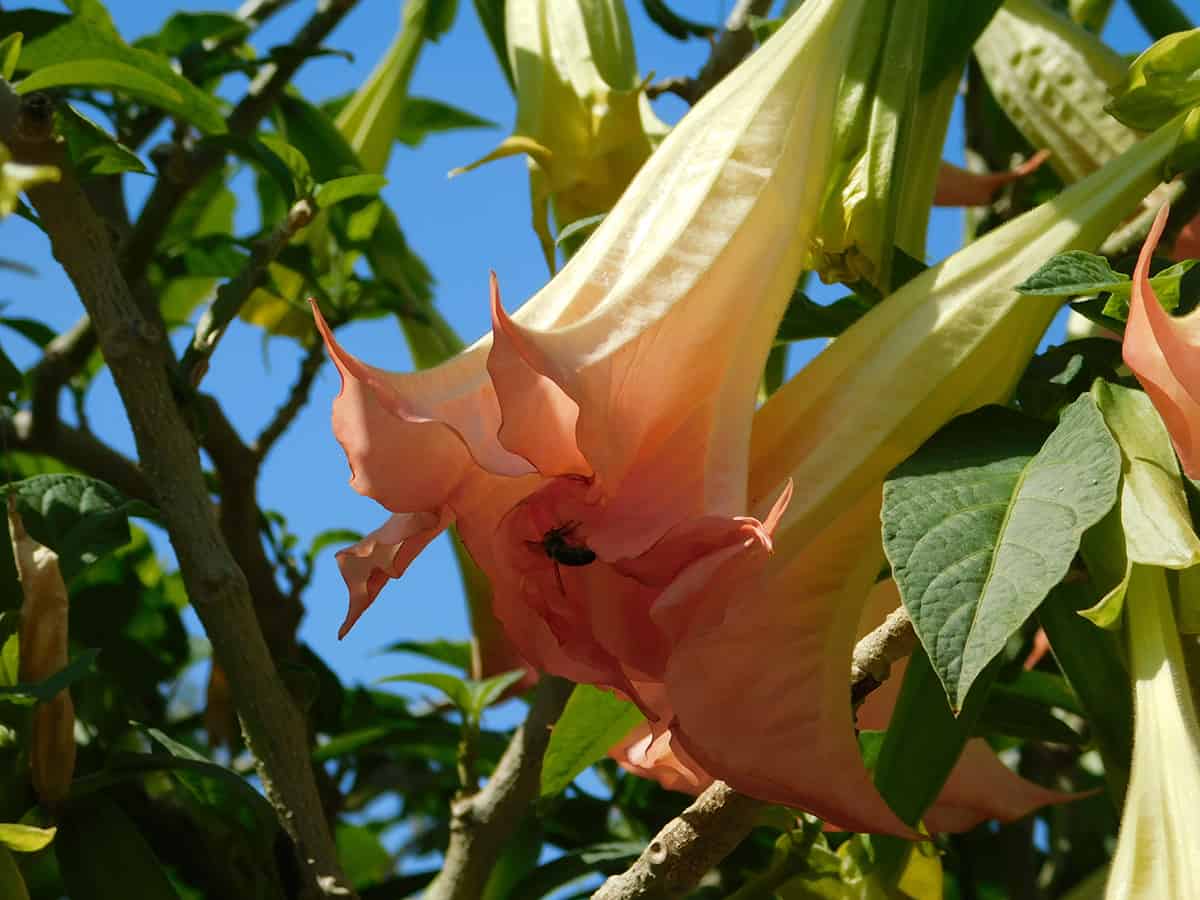
- Botanical name: Brugmansia versicolor
- Common names: Angel’s Tears, Brugmansia,
- Plant family: Solanaceae
- USDA hardiness zone: 9- 11
- Mature height: Up to 20 feet
- Mature spread: Up to 15 feet
This tree is endemic to Brazil, though is no longer found growing in the wild. It has been listed by the International Union for Conservation of Nature (IUCN) as ‘extinct in the wild’ since 2014. The tree is known for its pendulous flowers which droop downwards and flare outwards at the tips, creating the look of dangling trumpets. The flowers are white when they emerge, but as they age they will turn to shades of peach and orange.
The showy flowers typically measure around 15 inches in length, which makes them impossible to miss. The tree remains in bloom from summer right through to fall, putting on a spectacularly colorful display. As well as being visually entrancing, the flowers also emit an appealing fragrance which can be enjoyed from up to 100 feet away from the tree. It makes a beautiful addition to any landscape and creates a true talking piece.
The Angel’s Trumpet tree loves to be grown in full sun and will thrive anywhere without the risk of frost. It is virtually free from pests and disease but is highly toxic if ingested. It should be grown in rich, well-draining soils, and will need regular fertilizer applications to promote the best flower production.
Sacred Tree
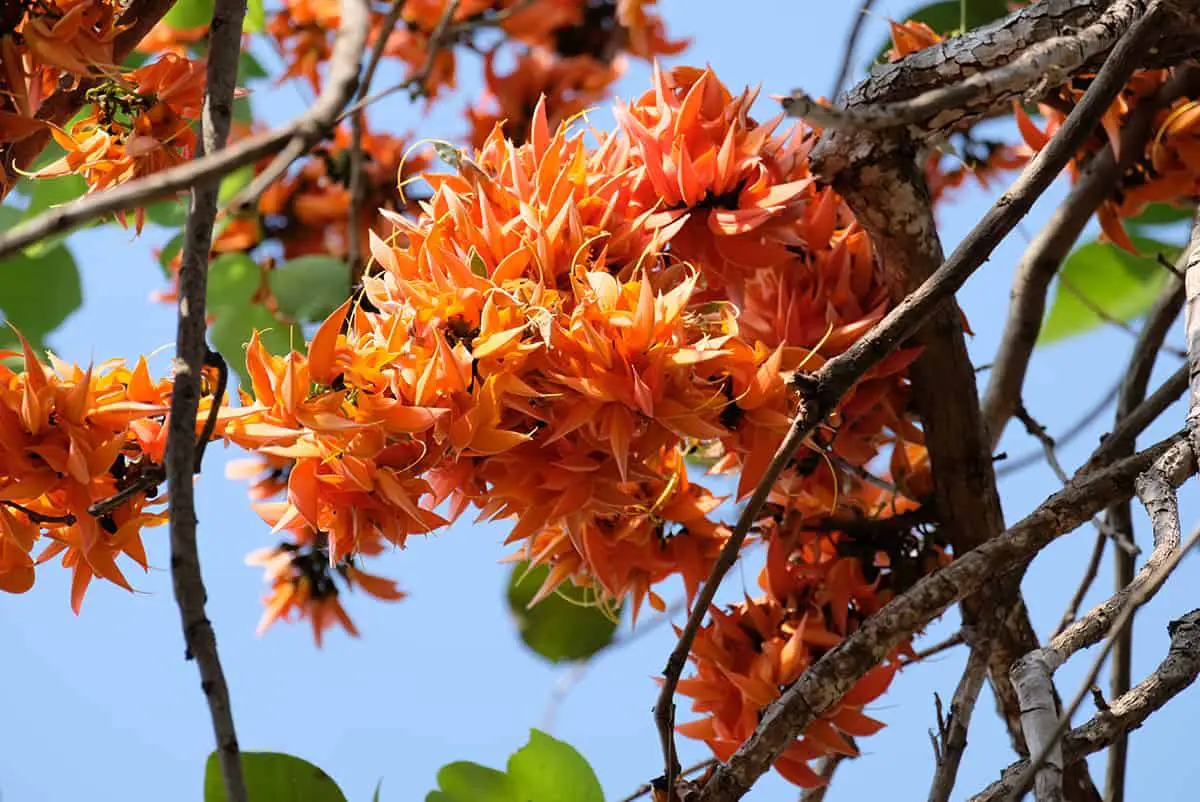
- Botanical name: Butea monosperma
- Common names: Flame of the Forest, Palash, Bastard Teak,
- Plant family: Fabaceae
- USDA hardiness zone: 10- 12
- Mature height: Up to 40 feet
- Mature spread: Up to 40 feet
This tree is native to subtropical regions of South Asia and Southeast Asia. It is regarded as sacred amongst Hindu’s and this is where the name ‘Sacred Tree’ comes from. In terms of use, it is cultivated as an ornamental tree, but it is also utilized as timber because the wood has good water resistance.
This tree is deciduous, slow growing, and small to medium-sized. It has a rounded canopy with large, leathery green leaves extending as long as 18 inches. The flowers of the Sacred Tree are bright orange and arrive in dense racemes measuring around 6 inches long. Each flower is curved, creating the look of a parrot’s beak.
Unusually, the tree blooms most heavily in winter, adding a shock of color to the landscape right through to spring. The conditions that the tree is growing in will largely affect blooming, with dry winters, wet winters, or very dry winters resulting in a lack of flowers.
Royal Poinciana
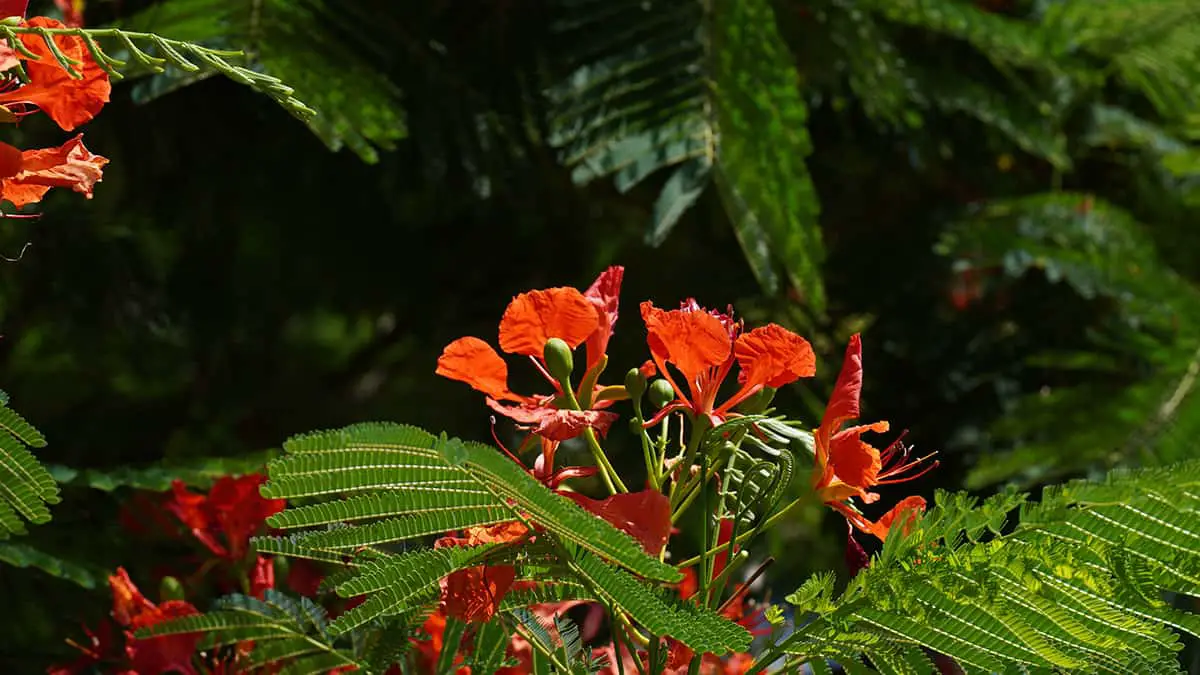
- Botanical name: Delonix regia
- Common names: Flame Tree, Flamboyant Tree, Peacock Flower
- Plant family: Fabaceae
- USDA hardiness zone: 10- 12
- Mature height: Up to 40 feet
- Mature spread: Up to 70 feet
This is an evergreen tree which is native to tropical Madagascar. It has a broad, spreading canopy which takes the shape of an umbrella. The lacy green leaves have a feather-like texture, making them appear similar to fern leaves. The flowers of this tree are the true star of the show, in vibrant orange to red with yellow markings.
Each flower measures around 4 inches across, with a heavy display arriving in spring to summer. The blooms appear to completely cover the tree for an intensely colorful appearance. As the flowers fade, they are replaced with seed pods which are also incredibly striking. These seed pods have a dark purple-red color and are dramatically oversized at around 24 inches in length. They hang from the lengths of the branches and will split open when mature to disperse between 20 and 40 seeds from each single pod.
The Royal Poinciana is popular in Mediterranean climates because it thrives in full sun and hot temperatures, and is also drought tolerant once established. It makes an ideal specimen tree, though be careful with its invasive roots which can cause issues when the tree is planted close to paths.
Ozark Witch Hazel
- Botanical name: Hamamelis vernalis
- Common names:
- Plant family: Hamamelidaceae
- USDA hardiness zone: 4 – 8
- Mature height: Up to 10 feet
- Mature spread: Up to 15 feet
This is a type of witch hazel tree which is native to the Ozark Plateau in Oklahoma, Missouri and Arkansas in the US. It is grown as a large shrub or small tree, with a densely branched spreading habit.
The Ozark Witch Hazel is deciduous, and flowers will bloom along bare branches in late winter to early spring. The blooms arrive in clusters, in shades of orange, yellow and red. They are resistant to frost, and will add a bright shock of color to the landscape at a time when few other plants will be in bloom. In very cold temperatures the petals of the flowers will curl in on themselves, and unfurl again as the temperature rises. The flowers give way to fruits in the fall, which are very attractive as a source of food to birds and wildlife. The foliage on the plant emerges in spring in shades of pale green, which darkens as the leaves mature. The foliage will fade to bronze and yellow in the fall before dropping to the ground.
This tree is suitable for growing in a range of conditions, including wet or dry sites, in a position of sun or shade. For best flowering, full sun is ideal. It is quite short lived, lasting a maximum of around 50 years.
Sweet Olive Tree
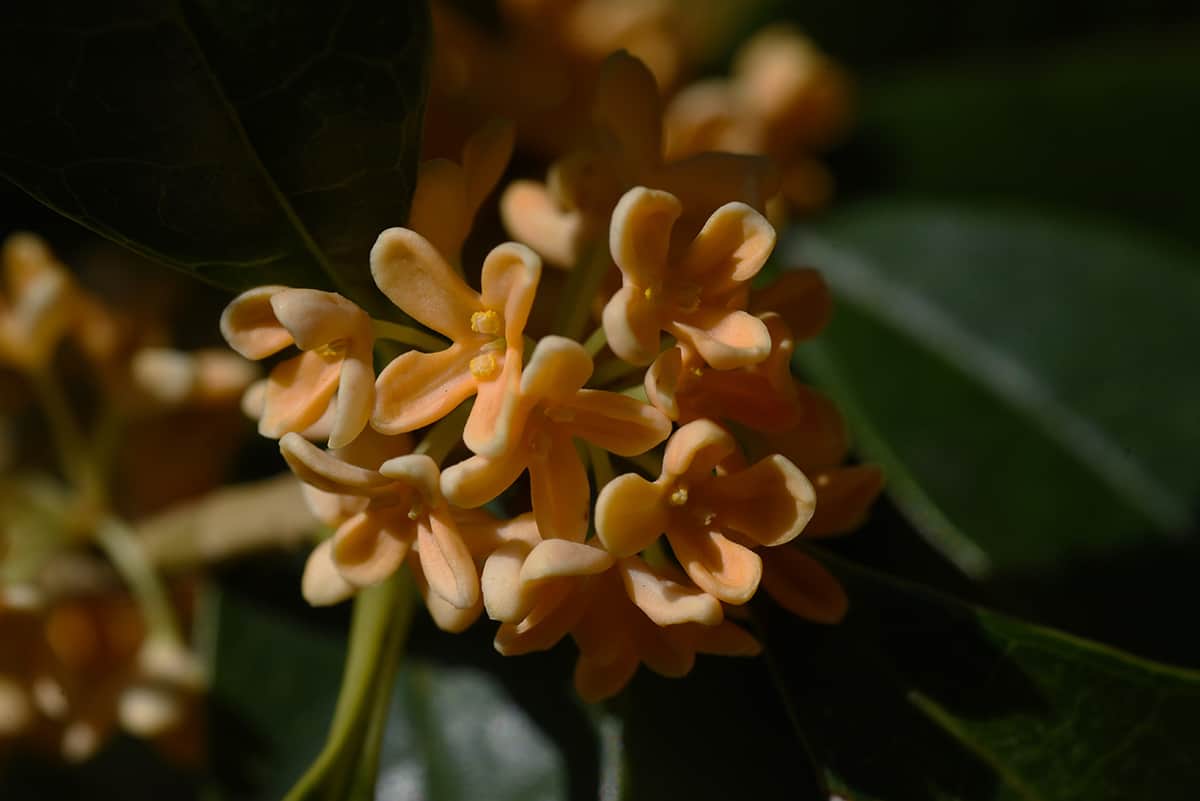
- Botanical name: Osmanthus fragrans
- Common names: Sweet Osmanthus, Sweet Olive, Fragrant Olive, Tea Olive
- Plant family: Oleaceae
- USDA hardiness zone: 7- 10
- Mature height: Up to 15 feet
- Mature spread: Up to 8 feet
The Sweet Olive Tree is a true olive tree belonging to the Olive family (Oleaceae). It is an evergreen plant that can be grown as a medium to large shrub or small tree and is native to Asia. It produces dense clusters of delicate yellow-orange flowers which emit a strong, fruity fragrance similar to apricots. The tree blooms in the fall, with flowers appearing all along the lengths of the branches. The evergreen foliage is leathery and green, with each leaf typically measuring between 3 and 6 inches in length.
This tree is slow-growing, and fares well as a container tree. It responds well to pruning and can be put to use as hedging or a privacy screen. It should be grown in full sun or partial shade, with some afternoon shade being preferable in hotter climates. It is tolerant of drought when established but prefers to grow in soils that are moist and well-draining.
Flowering Maple ‘Victor Reiter’
- Botanical name: Abutilon ‘Victor Reiter’
- Common names: Indian Mallow
- Plant family: Malvaceae
- USDA hardiness zone: 9- 11
- Mature height: Up to 6 feet
- Mature spread: Up to 4 feet
There are many varieties of Flowering Maple which produce flowers in a range of colors, including orange flowers. The ‘Victor Reiter’ Flowering Maple is significant because, unlike many low-growing types of Flowering Maple, this type can be grown as an upright shrub or small tree. It is an evergreen plant which produces round orange buds which develop into bell-shaped flowers in tangerine orange.
It has an extended blooming period, with flowers continually appearing on the tree from spring all the way through to fall. The tree is not a true maple and instead belongs to the mallow family (Malvaceae), however, the leaves do resemble maple leaves in terms of shape. The bright orange flowers stand out beautifully against the backdrop of dark green maple-like foliage.
This tree is easy to grow and works well in containers. It thrives in warm to hot climates, in full sun or partial shade. It appreciates some shade in the hottest summer temperatures and needs soil that is moist and well-draining.
Tree Aloe
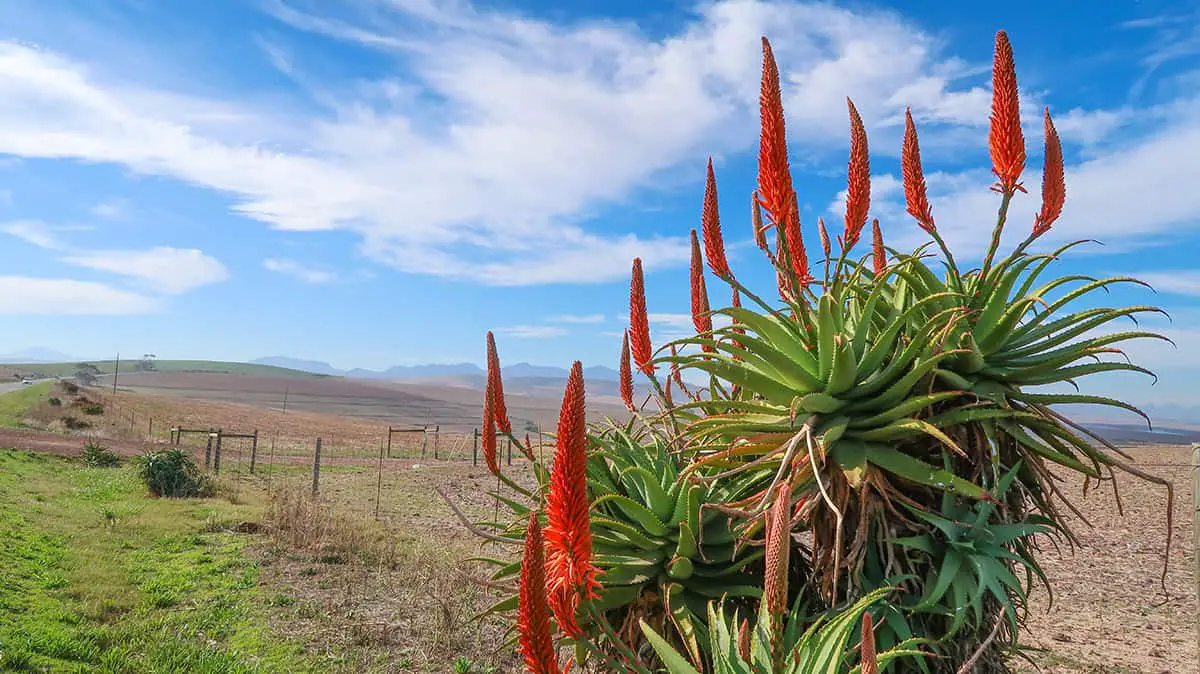
- Botanical name: Aloidendron barberae
- Common names: Tree Aloe
- Plant family: Asphodelaceae
- USDA hardiness zone: 9 – 11
- Mature height: Up to 60 feet
- Mature spread: Up to 20 feet
The Tree Aloe is a type of succulent which is native to North Africa. It is slow growing in its native habitat but can be fast-growing in cultivation, and is the tallest of all the aloe plants. The tree has a gray trunk and crowns of thick green, fleshy aloe leaves arranged in rosettes, with toothed margins.
The flowers of the tree bloom in winter, and have a peach-orange color, with tips that are flushed green. The flowers are large and shaped like cylinders, adding even more beauty to this unusual tree.
Tree Aloe’s thrive in fairly dry climates and can survive long periods of drought, however, they will flower more profusely when allowed water. They prefer full sun but can also tolerate some shade. Like aloe plants and other succulents, the Tree Aloe can be propagated easily with leaf cuttings. It makes a stunning sculptural statement in the landscape and needs plenty of space to grow to reach its potential.
